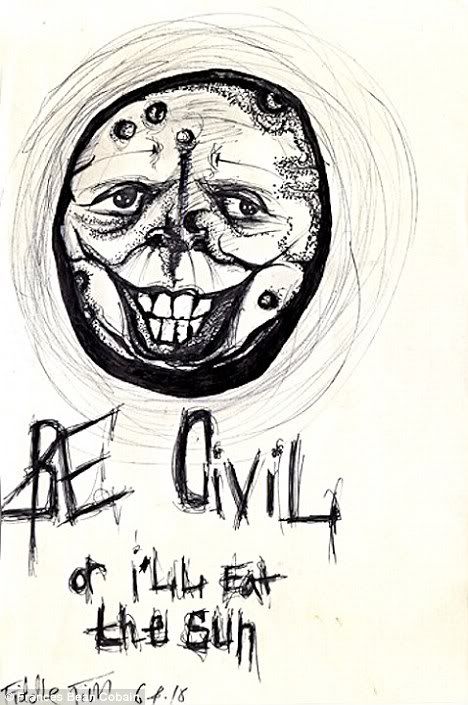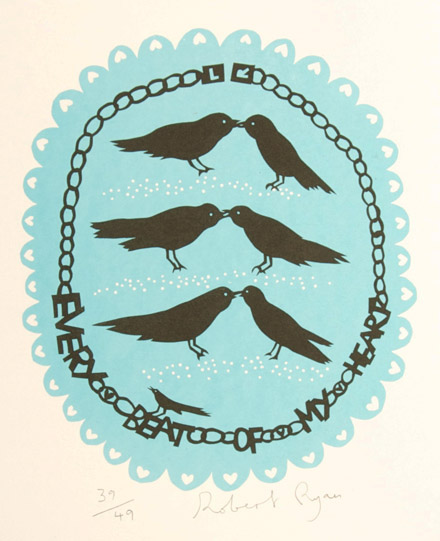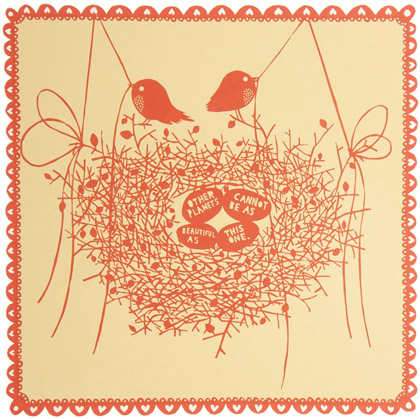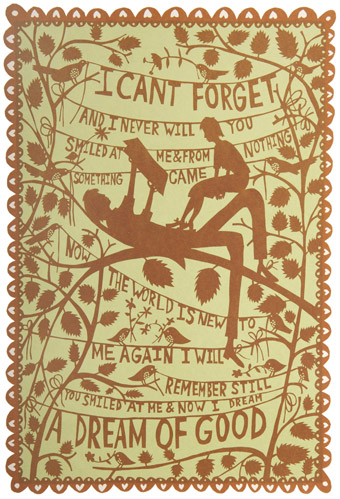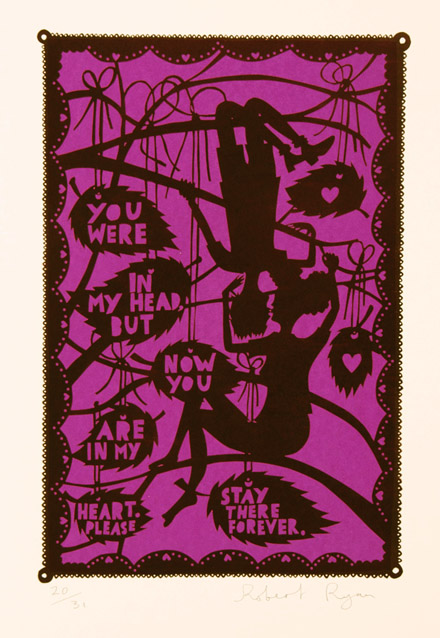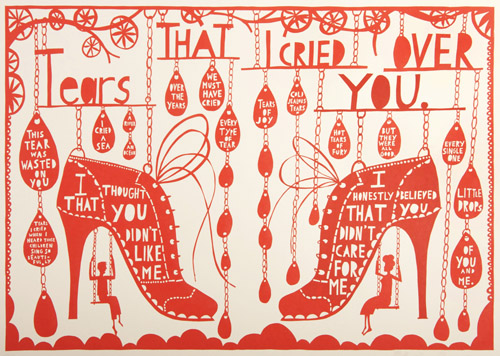When Isabella Blow committed suicide in 2007 the fashion world woke up from a dream that had fermented in its collective subconscious. It was a dream that had too long bound a flesh-and-blood woman to an unreal expectation and while the argument would never be that Blow's life was ended at the whim of a capricious industry, it is impossible to divorce her story from her position as a staple member of its glitterati. As she becomes evermore cemented in fashion mythology as the fairy godmother with the endless supply of outlandish hats I feel justified in asking if that position on the sidelines is enough of a lasting impression. Isabella's currency was her own energy, innovation and creativity. In watching the posthumous accolades mount up I can't help but feel she's being short changed.

Often since her death I've considered Blow's status as an icon to be separate from her overall body of work. Pioneering the designs of talented young hopefuls through arriving at parties and shows sporting their creations was a daily act of vision and support on her part but one that she unfortunately now finds herself principally remembered for. Widely credited with discovering a small plethora of designers, but most notably Alexander McQueen and Philip Treacy, it was tough to find a single obituary that failed to hone in on this point and although its implication is that she was a nurturing champion for vision, its emphasis as her magnum opus rings hollow and gives off a nasty odour of martyrdom. Blow once said,
'It's exhausting, discovering people. It's like being a mother, and the milk's dried up.' Was she herself tired of being some kind of magic wand while her own endeavours as an editor and stylist seemed secondary to the soaring heights of her protégés? Her remark certainly demonstrates her willingness to hang onto their wings once they'd taken flight from beneath hers, but it betrays her inner belief that the exchange was unfair and that she was more than a launch pad for others in the industry. Immediately after her death the media's portrait of her as McQueen's patron must have been decidedly unhelpful to the designer in his time of grief, having publicly lamented this exact press-pedalled notion of himself as eternally grateful to Queen Issy and her doors of opportunity. McQueen was a man who fully understood the business of hard graft and learning the trade. He wasn't happy to shunt years of experience as an apprentice tailor and the degree he had under his belt to the back room while Blow got the caption for discovering him under a rock somewhere.
Blow's status as a fashion icon was essentially her biggest compromise. Dressing up was what she did best and most regularly. She could be relied upon to turn up in her signature silhouette and throw engaging, articulate sound bytes to the press gang like bread crumbs. She could not be relied upon to tow the line in her working life as an editor and stylist, illustrated most notably by her sacking from Vogue, Tatler and The Sunday Times. Nor could she be relied upon to rein in her fascinated crusade for all things 'fringe', eccentric and non-commercial, which her late husband Detmar Blow is convinced caused her to be mocked at times. It is for her rebellious, pioneering attitudes and actions that she ought to be remembered and yet it always comes back to the hats. Or the fact that she turned McQueen's pumpkin into a carriage by mentoring him and buying up his first collection. Or the hats.
Being remembered for breathing life into other people's dream worlds is no small feat but it's only half the story. I've found it frustrating and surprising that it's so difficult to find work overseen by Blow in any of the prominent publications she worked for. It's so tough to find imagery styled by Blow or published articles edited by her. Every search comes up with an absolute sea of photographs of her wearing outfits described as 'flamboyant', 'fabulous' and 'eccentric' while her literal contributions beyond the realm of her own wardrobe have passed into obscurity. Meanwhile her biographer Lauren Goldstein has observed that having dived into the depths of Blow's life and personality her dress sense is actually one of the least interesting things about her. Why are we so satisfied with seeing her clothes as her soul?

Whether Blow felt she was sold short or not, it's clear that by the time of her death she was more than aware that she'd reached iconic status. Matt Groening, the creator of The Simpsons, talks about the importance of designing classic, memorable cartoons. The secret is that they must be recognisable in silhouette. That distinctive outline that gives a character away by the cast of their shadow holds enough power to instantly fill the audience with a trained emotional response. Blow's silhouette was unmistakable and that wouldn't have been through accident alone. It was a perfect mix of nature and mastery. Philip Treacy once remarked that she wore a hat like she wasn't even wearing a hat. It was as though her costume was part of her body and an extension of her mind. Lauren Goldstein interpreted Isabella's wild dress sense as the necessary plumage for warding off her inadequacies and attracting attention. Isabella admitted she used flamboyant hats to hide at times, and yet the more she borrowed from her own image and caricature the more she felt she was open to scrutiny and possible rejection from others. Since Blow never received deserved merit for her own endeavours the shaky ground of the fashion icon became her habitat and according to friends and acquaintances she found it panic-inducing, lonely and paranoid. In order for icons to retain their status they have to die before they screw it up, like James Dean and Marilyn Monroe. Or they have to retire before their prime in order to be remembered for what mattered like Elizabeth Taylor. In between the rise and the fall there is a constant cycle of reinvention and insecurity as a tangle of the ego and the underneath get churned through the rumour mills and spat down the red carpets. Had Blow been appreciated for her servitude rather than her star quality she may have avoided the pitfalls of basing private happiness on public love.

Having an eye for the future is an indisputable skill in the fashion industry and if anyone had that eye, it belonged to Blow and she was never afraid to use it. My dispute hasn't really been with seeing her hailed as a troubadour of tomorrow but in the fact that this wasn't the meat of her market value. It's easy to look at a photograph of an incredibly confident woman in a fabulous hat and feel that our admiration of the image is tribute enough. It's harder to peel back the layers and try to understand why someone who was consecutively fired from major publications can be understood as an unwanted Pandora opening a box of monstrous and mythic forays into the uncomfortable art so often missing - that spanner in the works of the fashion machine - its soul, its drive, its magnetism. Ultimately McQueen should never be looked on as her biggest achievement. He was an incredible driving force in his own right, he would have made the big time sooner or later and the creative exchange ultimately failed when he didn't offer Blow the long-awaited job as part of his team upon taking over as head of Givenchy. Summing up her professional high point as a bitter sweet creative partnership and all the disappointment that entailed on both sides is an insult to her wider talent and to her personal legacy. Instead of asking other talents to reflect hers like a cheap mirror, I choose to use her death as a chance to spend less time talking about who she discovered and more time discovering her.
 It runs in the family. Long after Kurt Cobain and Courtney Love produced their own album artwork, their daughter Frances Bean's debut exhibition, Scumfuck opened in Los Angeles to an appreciative audience with money to burn. Working under the pseudonym, 'Tim Fiddle' Cobain has produced grotesque, dark fantasy characters with their messages of defiance, riddles and curious names allowing plenty of room for conjecture and analysis.
It runs in the family. Long after Kurt Cobain and Courtney Love produced their own album artwork, their daughter Frances Bean's debut exhibition, Scumfuck opened in Los Angeles to an appreciative audience with money to burn. Working under the pseudonym, 'Tim Fiddle' Cobain has produced grotesque, dark fantasy characters with their messages of defiance, riddles and curious names allowing plenty of room for conjecture and analysis.
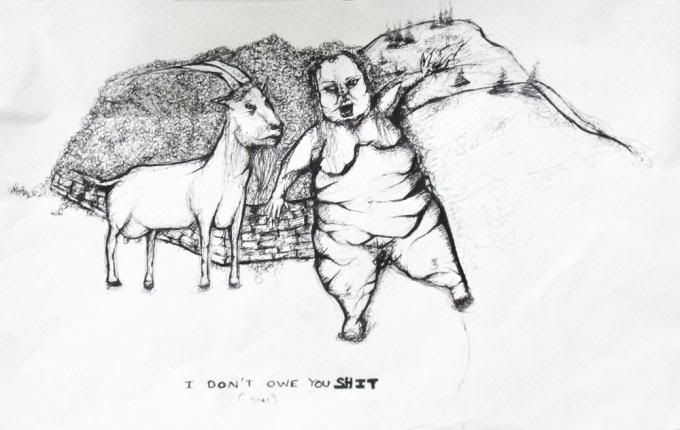 Although the images have the vague appearance of modern satirical illustration (á la Steadman) the content of the work is purely emotional and speaks of self-discovery and internal struggles. It's impossible at this stage to separate the body of work from her connection to her parents and their artistic background. Her cast of drooling, inane idols bears some resemblance to sketches produced by her father and look like the kind of thing you could expect to find in his published journals, yet the fact that there is a specific style running through the pieces has made for a level of artistic cohesion that's unusual for an eighteen year old. The exhibition was not the mish-mash of teenage experimentation one might expect. The direction is definite and the technique is polished. It's too soon to write Frances Bean off as an opportunist taking advantage of her position to sell some otherwise unremarkable sketches.
Although the images have the vague appearance of modern satirical illustration (á la Steadman) the content of the work is purely emotional and speaks of self-discovery and internal struggles. It's impossible at this stage to separate the body of work from her connection to her parents and their artistic background. Her cast of drooling, inane idols bears some resemblance to sketches produced by her father and look like the kind of thing you could expect to find in his published journals, yet the fact that there is a specific style running through the pieces has made for a level of artistic cohesion that's unusual for an eighteen year old. The exhibition was not the mish-mash of teenage experimentation one might expect. The direction is definite and the technique is polished. It's too soon to write Frances Bean off as an opportunist taking advantage of her position to sell some otherwise unremarkable sketches.
